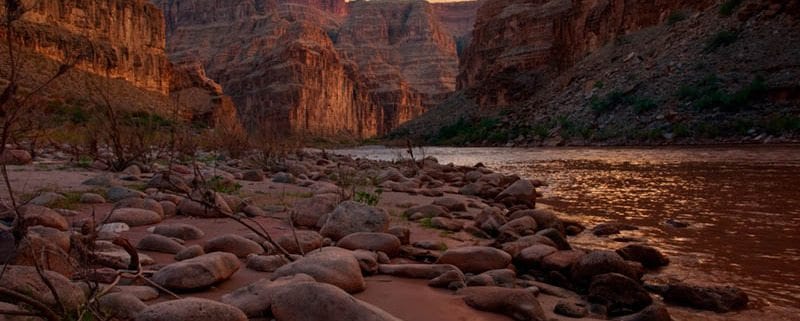Grand Canyon History | Architect of Lookout Studio, Phantom Ranch
One of the first female architects and designers in the west, Mary Elizabeth Jane Colter has her name etched all around the Grand Canyon.
Born in Pittsburgh in 1869, Colter was a Minneapolis schoolteacher who eventually attended the California School of Design in San Francisco and took a job with the Fred Harvey Company in 1901 decorating a hotel in Albuquerque.
Colter transitioned from interior designer to architect with the Fred Harvey Company and played a significant role in developing landmark buildings at the Grand Canyon, including Hopi House (1905), the Lookout Studio (1914), Hermits Rest (1914), Phantom Ranch (1922), the Desert View Watchtower (1932), and Bright Angel Lodge (1935).
In her work, Colter emphasized the architectural styles of Native Americans and Spanish settlers in the Southwest long before these styles became fashionable.
Colter created Hopi House to serve as a living museum where Hopi Indians could reside while making and selling traditional crafts. The building was inspired by her interpretation of the Hopi dwelling in Oraibi, Arizona.
Lookout Studio is housed in a stone building and constructed in 1914 by the Santa Fe Railway as a photography studio to compete with the Kolb brothers. Lookout Studio operates as a gift shop and an observation station for visitors, featuring high-powered telescopes on its outdoor terrace.
With the Bright Angel Lodge, Colter included historically significant structures that might have been demolished without her intervention. These structures are the Buckey O’Neill Cabin, which was once home to one of Roosevelt’s Rough Riders, and the Red Horse Station, which served as the post office for 20 years.
The only lodging facility below the canyon rim, Phantom Ranch is an oasis nestled on the north side of the Colorado River near its meeting point with Bright Angel Creek and Phantom Creek.
Located within Grand Canyon National Park and on the National Register of Historic Places, Phantom Ranch is open year-round and can only be reached by mule, by foot, or by rafting the Colorado River. It is a popular overnight spot for hikers and mule riders traveling to the bottom of the canyon via the Bright Angel or Kaibab trails.
Phantom Ranch’s site is the former home of Native Americans. Pit houses and a ceremonial kiva dating from around 1050 have been discovered there. The earliest recorded visit by Europeans occurred in 1869 when John Wesley Powell and his traveling party camped at the beach.
Prospectors started using the area in the 1890s, using mules to haul ore. At the turn of the 20th century, the founders of the Grand Canyon Transportation Company hired a crew to improve the trail from Phantom Ranch to the Canyon’s North Rim. During a hunting expedition in 1913, President Theodore Roosevelt ventured down the canyon to the camp. In honor of this visit, the site became known as Roosevelt Camp.
In 1922, Colter was hired to design permanent lodging. It was Colter who suggested that its name be changed to Phantom Ranch.
Construction on the ranch posed a significant challenge since all building materials except rock had to be hauled down by mules. This led to the architectural style called National Park Service Rustic, which includes native stone, rough-hewn wood, large-scale design elements, and intensive use of hand labor.
Built in 1932 as a replica of a prehistoric Indian tower, the 70-foot-tall Desert View Watchtower provides a magnificent view of the Grand Canyon, the Painted Desert to the east and the San Francisco Peaks to the south. The tower is the highest point on the South Rim, and the interior walls of the tower are adorned by murals from Hopi artist Fred Kabotie.
To learn more about the Grand Canyon itself, make plans to see the Visitor Center, which is located at the south rim entrance of Grand Canyon National Park. The visitor center serves as a destination and a resource for the most comprehensive selection of information about Grand Canyon area hotels, tours, attractions, restaurants and sightseeing and outdoor activities.




